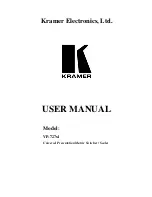
[Troubleshooting]
1. Check if the line card is firmly inserted. If no, install the line card again and ensure that it is
inserted tightly before you tighten the fastening screws.
2. If the line card still does not work, check if the connector of the slot on the backplane is loose. If
yes, insert the board to another slot for a try.
3. If the slot and connection are not the cause, return the line card for repair.
Fault 3: The LED is abnormal after a line card works for some time.
[Fault Description]
The Status LED of the line card is OFF or RED. The Link/ACT LED of the line card is solid ON when
no network cable or fiber is plugged. The fault persists after restart.
[Troubleshooting]
1. Check if the board gets loose. If so, install the line card again and ensure that it is inserted tightly
before you tighten the fastening screws.
2. If the line card still does not work, check if the connector of the slot on the backplane is loose
and check if the guide rail of the slot is deformed. If so, insert the board to another slot for a try.
3. If the slot and connection are not the cause, return the line card for repair.
Fault 4: The LED of the supervisor engine is abnormal.
[Fault Description]
The LED of the supervisor engine becomes abnormal after the board is powered on or works for
some time. For example, the Status LED is flashing or OFF, and the Alarm LED is red.
[Troubleshooting]
1. Check if the supervisor engine gets loose. If so, install the supervisor engine again and ensure
that it is inserted tightly, before you tighten the fastening screws.
2. If the line card still does not work, check if the connector of the slot on the backplane is loose
and check if the guide rail of the slot is deformed. If yes, insert the board to another slot for a try.
3. If the slot and connection are not the cause, return the supervisor engine for repair.
4. When the Alarm LED is red, the cause may be the fault of another module in the system, in
which case you can check other modules (for example, line card, fan, power, and overheating)
for any alarm. If yes, you should first handle the faults of other modules. You can also identify
the faults by logging in to the management software.
Fault 5: The fan tray does not work or an exception occurs to the LED.
[Fault Description]
After the system starts, the fans in the fan tray do not work or the Power LED is OFF, and the Alarm
LED is red.
[Troubleshooting]
1. Check if the connection between the fan tray and the backplane is secure and if the connector
gets loose.
2. If the connection is secure, you need to replace the fan tray.
Fault 6: The serial port console has no output.
[Fault Description]
After the system is started, the serial port console does not display any information.
[Troubleshooting]
1. Check whether serial port cables are connected correctly and whether the connected serial port
is identical with that configured on the super terminal.


































